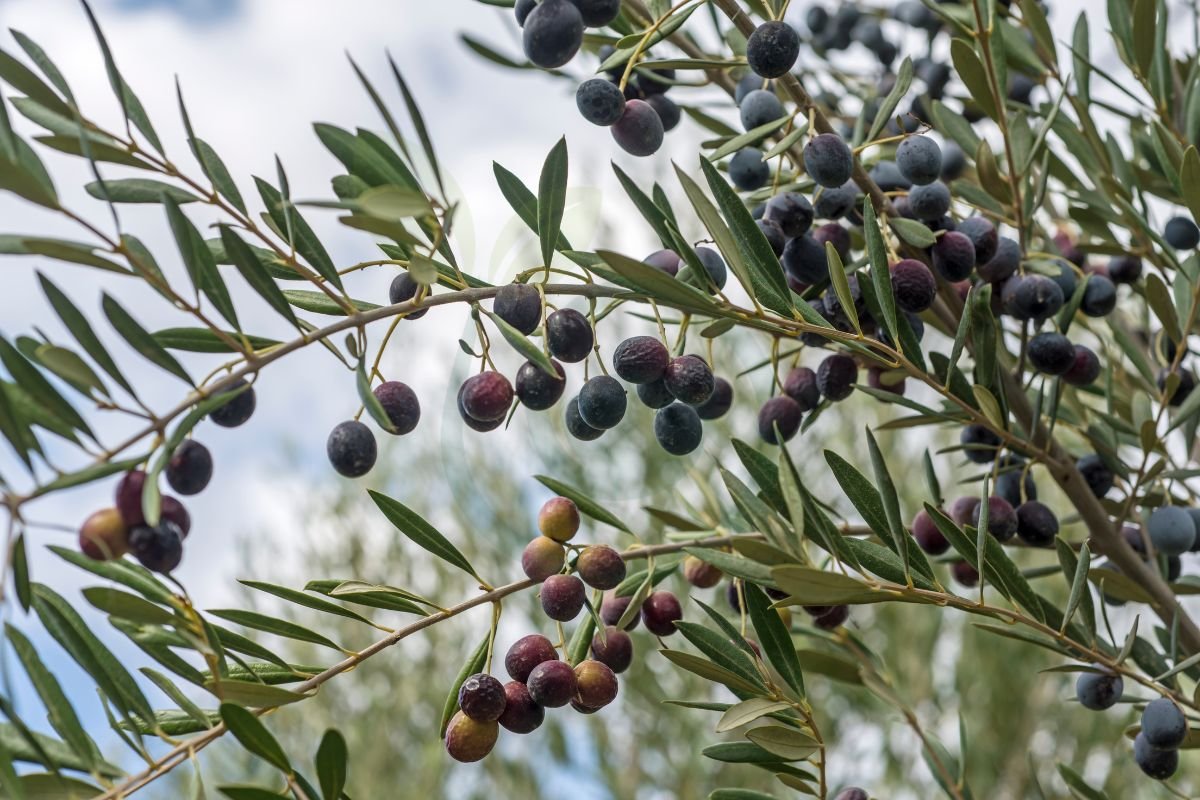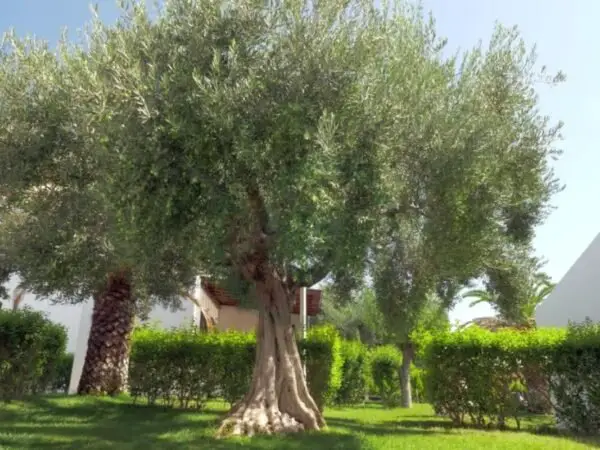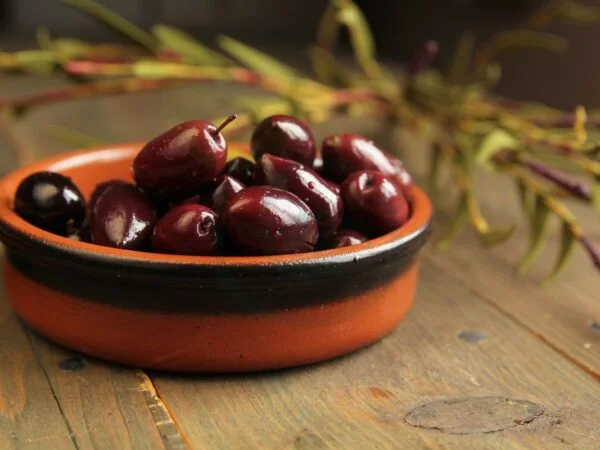
Proactive measures can make all the difference. While olive trees are hardy, they can be vulnerable to extreme cold conditions. By taking steps like insulating the trunks and using frost cloth during chilly nights, you can safeguard your precious olive trees and ensure a bountiful harvest. Neglecting this aspect could leave your olive trees at the mercy of harsh weather, potentially impacting their health and productivity. Stay ahead of the game by understanding the importance of protecting your olive trees from frost.
Key Takeaways
- Protecting olive trees from frost is crucial to ensure their survival and productivity.
- Implement winterizing techniques such as wrapping trunks, mulching, and covering with frost cloth to shield olive trees from cold temperatures.
- For potted olive trees, move them to a sheltered location or indoors during winter to prevent frost damage.
- Proper positioning and shelter can significantly reduce the impact of frost on olive trees.
- Ensure good drainage and maintain tree health to enhance their resilience against frost damage.
- In cold climates, overwintering techniques like insulating the roots and protecting the canopy are essential for olive tree survival.
- Follow seasonal care tips like reducing watering in winter to help olive trees withstand frost better.
- Consult with experts or local garden centers for specific advice on protecting olive trees from frost in your region.
- Avoid common mistakes like using plastic covers directly on trees or over-fertilizing, which can harm olive trees rather than protect them.
Importance of Protection
Hardy Nature
Olive trees are tough and can handle various temperatures, showcasing their resilience. Their adaptability, including their trunk, allows them to thrive in diverse environments. This hardy nature enables olive trees to endure harsh conditions without significant damage.
Olive trees possess a natural resistance to frost, making them somewhat resilient to light frosts that may occur. While they can withstand mild frost with minimal harm, severe frost poses a threat to both the tree and its fruits. Protecting olive trees from extreme cold becomes crucial in ensuring their health and productivity.
Frost Survival
Winter brings risks for olive trees as freezing temperatures can harm their foliage and branches. The exposure to prolonged cold weather during winter months can impact the tree's ability to produce fruits effectively. Shielding olive trees from these winter risks is essential for maintaining their overall well-being and maximizing fruit yield.
Winterizing Techniques
Wrapping Trees
Wrapping olive trees with protective materials is crucial to shield them from frost damage. By creating a barrier between the tree and cold air, wrapping helps maintain a stable temperature around the tree. This method is especially prevalent in regions with severe winters where temperatures drop significantly. The protective layer acts as a shield against freezing temperatures, safeguarding the olive tree's delicate structure.
To protect olive trees effectively, utilizing fleece as a cover can be highly beneficial. Fleece serves as an excellent insulator by trapping heat close to the tree, preventing it from freezing during cold spells. Fleece allows for proper air circulation while still providing insulation, striking a balance that shields the tree without suffocating it. This method proves efficient in maintaining an optimal temperature for olive trees to thrive even in harsh winter conditions.
Insulation Methods
Employing various insulation methods plays a vital role in safeguarding olive trees from frost damage. Mulching around the base of the tree serves as an effective way to regulate soil temperature and protect roots from extreme cold. By applying mulch such as straw or hay on top of the soil surrounding the olive tree, additional insulation is provided against frost penetration into the ground. These natural materials act as barriers that retain heat and prevent rapid temperature fluctuations that could harm the tree's root system.
-
Pros:
-
Maintains stable temperatures for optimal growth.
-
Utilizes natural materials for insulation.
-
Cons:
-
Requires regular maintenance and monitoring.
-
May attract pests if not managed properly.
Potted Olive Trees
Winter Care
Olive trees require proper care during winter to survive the cold months. Pruning before winter is crucial to eliminate dead or damaged branches that can harm the tree. Ensuring adequate watering and fertilization is essential for maintaining the tree's health throughout winter. Without these measures, olive trees may struggle to withstand harsh weather conditions.
To protect potted olive trees from frost, consider moving them indoors in regions with extremely cold winters. Indoor environments offer a shield against freezing temperatures that could damage the plants. When transitioning olive trees inside, it's vital to provide them with sufficient sunlight and regular watering while they are away from their natural outdoor habitat.
Preventing Frozen Roots
Frozen roots pose a significant threat to olive trees' overall health and survival. To safeguard against this risk, applying a layer of mulch around the base of the tree serves as insulation for the roots during colder periods. Moreover, avoiding excessive watering in winter is crucial since waterlogged soil can lead to frozen roots, which may ultimately harm the plant's well-being.
Positioning and Shelter
Away from Elements
Placing olive trees in sheltered areas shields them from harsh winter elements. Strong winds and direct cold drafts can harm the tree, so it's crucial to avoid exposing it to these conditions. Consider planting olive trees near walls or buildings for added protection.
Creating a physical shelter around olive trees offers extra protection against frost. Temporary structures like wooden frames covered with plastic sheeting can shield the tree effectively. It's essential to ensure proper ventilation within the shelter to prevent condensation buildup that could harm the tree.
Drainage and Health
Winter Drainage
Adequate drainage is crucial for protecting olive trees from frost during winter. Waterlogging around olive trees can be detrimental, potentially leading to root rot and diseases. To prevent this, ensure the soil has good drainage properties. Consider using raised beds if natural drainage is poor.
Poor drainage not only affects the health of olive trees but also their ability to survive frosty conditions. By maintaining proper water flow in the soil, you can protect the roots from damage caused by excess moisture. This simple step significantly contributes to the overall health and resilience of your olive trees during colder months.
Root Health
Root health plays a vital role in shielding olive trees from frost effectively. Regularly inspect the roots for any signs of rot or disease that could compromise their ability to withstand harsh weather conditions. In addition to regular checks, ensuring proper watering practices are essential for maintaining healthy roots that can better endure frost spells.
Overwintering in Cold Climates
Overwintering in the UK
Olive trees can thrive in the UK with proper care, especially when choosing cold-hardy varieties. These variants are well-suited to the UK's climate, ensuring their survival during harsh winters. Employ insulation methods like wrapping the base of the tree with burlap or hessian to protect it from freezing temperatures.
To further safeguard olive trees during winter in the UK, using protective coverings is crucial. These coverings shield the tree from long periods of frost and freezing conditions. By utilizing techniques such as covering them with frost blankets or cloths, you can effectively shield your olive trees from extreme weather.
Covering Techniques
Different covering methods offer effective protection against frost for olive trees. Wrapping olive trees with burlap or hessian not only insulates them but also allows necessary air circulation for optimal health. This technique acts as a barrier against freezing temperatures, maintaining a stable environment around the tree.
In addition to using burlap or hessian, employing frost blankets is another popular method to protect olive trees from frost damage. These specialized covers act as shields against freezing conditions by trapping heat close to the tree while still allowing essential airflow. When facing long periods of cold weather, these covers become invaluable tools for preserving your olive trees' health and vitality.
Seasonal Care Tips
Autumn Preparations
Protecting olive trees from frost damage starts with adequate autumn preparations. Before winter sets in, it's crucial to take certain steps to safeguard your olive tree. Start by pruning the tree, removing any dead or diseased branches that could be vulnerable to frost damage. Make sure to clear debris around the base of the tree, including fallen leaves and other organic matter that can attract pests or diseases during the colder months.
To provide extra insulation and protection for your olive tree, consider applying a layer of mulch around its base. Mulch helps regulate soil temperature and moisture levels, which are essential for the tree's health during winter. Furthermore, you may want to use protective coverings, such as burlap or frost cloth, especially if you live in an area prone to harsh frosts.
Removing Fleece
As spring approaches, it's important to start thinking about when and how to remove fleece or other protective coverings from your olive tree. Gradually exposing the tree to cooler temperatures will help prevent shock and ensure a smooth transition into warmer weather conditions. Keep a close eye on weather forecasts and monitor temperature fluctuations carefully.
When you're confident that the risk of frost has passed in your region, it's time to remove any protective coverings from your olive tree completely. This step is crucial as leaving coverings on too long can inhibit growth and potentially harm the tree’s development.
Expert Advice Compilation
Smart Tips
Placing a thermometer near your olive tree is crucial to monitor temperature changes, helping you take necessary precautions. During winter, ensure the soil around the tree remains slightly moist by watering it sparingly. Avoid using plastic covers directly on the tree as they can lead to harmful condensation buildup.
- Monitor temperature with a thermometer
- Water sparingly in winter
- Avoid plastic covers to prevent condensation
Expert Recommendations
For personalized guidance on protecting your olive trees from frost, consider consulting local experts or horticulturists. They offer valuable insights tailored to your region's specific needs and conditions. Joining gardening forums or communities can also connect you with seasoned growers who can provide practical advice.
Common Mistakes to Avoid
Leaving olive trees outside during winter in mild climates is generally acceptable, but it's crucial to keep an eye on weather forecasts. If severe frost is predicted, taking precautions becomes essential. Young or newly planted olive trees are more susceptible and may need extra protection compared to older ones.
Inadequate insulation poses a significant risk of frost damage to olive trees. It's vital to ensure that the entire tree is well-covered and shielded from the cold. Regularly inspect the insulation for any gaps or openings where cold air could seep through, compromising the protection needed for the tree.
You now have the tools to safeguard your olive trees from frost and ensure their well-being during the winter months. By understanding the importance of protection, implementing winterizing techniques, and avoiding common mistakes, you can nurture your olive trees effectively. Remember to seek expert advice when needed and follow seasonal care tips diligently.
Take charge of your olive trees' health and vitality by applying the knowledge you've gained. With proper positioning, shelter, and drainage, alongside overwintering strategies for cold climates, you can enjoy thriving olive trees year-round. Embrace these practices to cultivate a flourishing garden and witness the beauty of your protected olive trees for seasons to come.
Frequently Asked Questions
Do olive trees need protection from frost?
Yes, olive trees require protection from frost to prevent damage to their delicate branches and leaves. Frost can harm the tree's growth and fruit production. Implementing winterizing techniques can help safeguard your olive trees during cold weather.
How do you protect potted olive trees from frost?
To protect potted olive trees from frost, move them to a sheltered location like a garage or shed. Cover the pots with insulating material or hessian sacks for added warmth. Avoid placing them directly on cold surfaces like concrete.
What is the significance of proper positioning and shelter for olive trees in winter?
Properly positioning and providing shelter for your olive trees in winter can shield them from harsh weather conditions like freezing temperatures and strong winds. This helps maintain the tree's health and protects it from potential damage caused by extreme cold.
Why is drainage crucial for maintaining the health of olive trees during winter?
Ensuring good drainage is essential for preventing waterlogging around the roots of olive trees during winter. Excess moisture can lead to root rot, which compromises the tree's health and makes it more susceptible to frost damage.
How should one overwinter olive trees in cold climates?
In colder regions, overwintering methods such as wrapping trunks with burlap or applying mulch around the base help insulate roots against freezing temperatures. Consider using protective coverings or creating windbreaks to shield your olive tree from icy conditions.
Image Source: Paid image from CANVA




